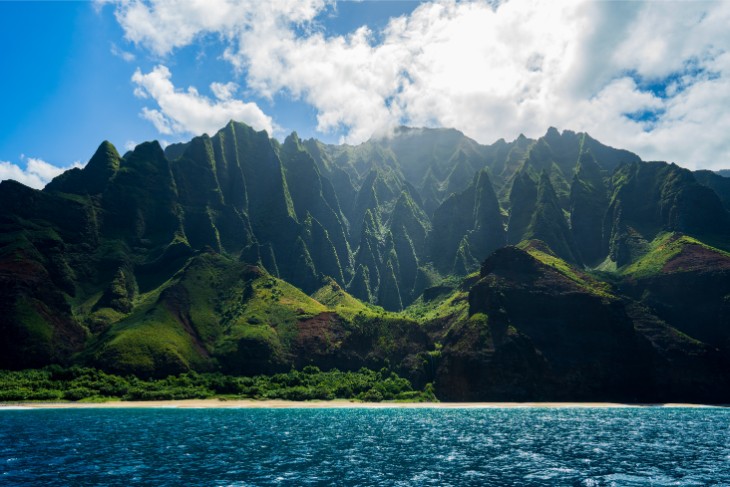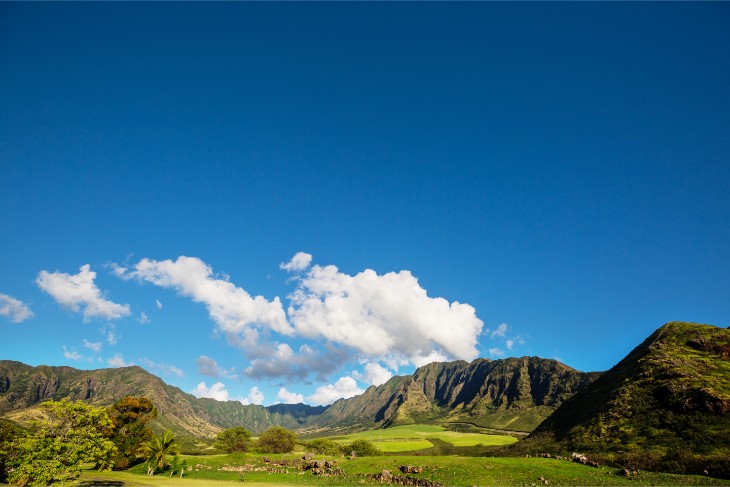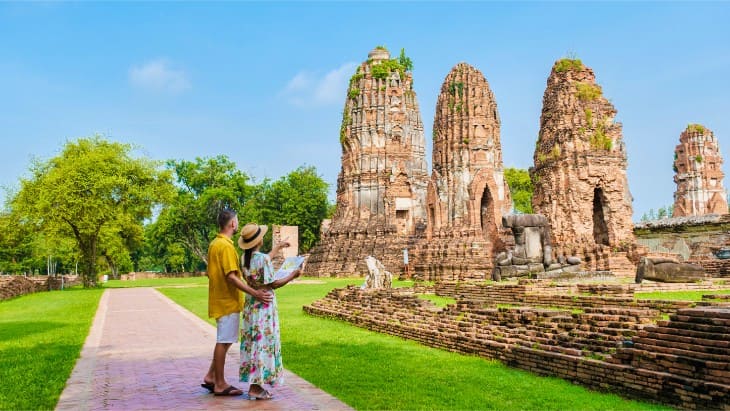- 1. Waikiki Beach, Oahu
- 2. Diamond Head Crater Hike, Oahu
- 3. Pearl Harbor Premium Tour Packages, Oahu
- 4. Haleakala Sunrise Tours, Maui
- 5. Road to Hana Group Tours, Maui
- 6. Polynesian Cultural Center, Oahu
- 7. Atlantis Submarine Tours, Multiple Islands
- 8. Hotel Luau Dinner Shows, All Islands
- 9. Peak Season Helicopter Tours, All Islands
- 10. Resort Activity Markups, All Islands
- How to Avoid Tourist Traps
- Finding Authentic Experiences
- Conclusion
Hawaii draws millions of visitors annually, but many end up paying premium prices for overcrowded, overrated experiences. This guide identifies the most common tourist traps across the Hawaiian Islands and provides practical alternatives that offer better value and more authentic experiences.
These recommendations come from analyzing visitor feedback, local insights, and cost comparisons across multiple islands. The goal is straightforward: help you avoid wasting money and time on disappointing attractions while discovering what makes Hawaii genuinely special.
1. Waikiki Beach, Oahu
Why it's problematic: Waikiki Beach attracts over 4 million visitors yearly, creating constant overcrowding. Beach space is limited, with barely enough room to lay a towel during peak hours. Parking costs $25-40 daily, and beachfront restaurants charge $18-25 for basic meals that cost $8-12 elsewhere on the island.
The water quality fluctuates due to high usage and urban runoff. Vendors constantly approach beachgoers selling overpriced souvenirs and activities. The experience feels more like a crowded city beach than a tropical paradise.
Better alternatives:
- Lanikai Beach: Located 30 minutes from Honolulu, this beach offers soft white sand and clear water with significantly fewer crowds. Free parking available at Kailua Beach Park.
- Sunset Beach: On the North Shore, this spot provides authentic Hawaiian atmosphere with local surfers and food trucks. Winter months offer world-class surfing competitions.
- Keewalos Basin: A local favorite near Honolulu with calm waters, perfect for families, and minimal tourist presence.
2. Diamond Head Crater Hike, Oahu
Why it's problematic: Diamond Head requires advance reservations and charges $5 per person plus $10 parking. The 0.8-mile trail becomes extremely congested, especially during sunrise and sunset hours. Wait times at the summit can exceed 30 minutes just to take photos.
The hike itself is relatively easy but offers limited views compared to other island hikes. The experience feels rushed due to crowds and time restrictions.
Better alternatives:
- Koko Crater Trail: This 1,048-step railway tie climb provides a serious workout and panoramic views without crowds. Free parking and no reservations required.
- Makapuu Lighthouse Trail: A paved 2-mile round trip with ocean views and whale watching opportunities during winter months. Suitable for all fitness levels.
- Lanikai Pillbox Hike: A 30-minute hike offering views of the Mokulua Islands and Lanikai Beach below.
3. Pearl Harbor Premium Tour Packages, Oahu
Why it's problematic: Third-party tour companies charge $80-150 per person for Pearl Harbor packages, including unnecessary hotel pickups and gift shop stops. The basic Pearl Harbor experience costs $25 per person when booked directly.
These tours often include high-pressure sales pitches for additional activities and may rush visitors through exhibits to maintain their schedule.
Better alternatives:
- Direct booking: Reserve tickets through the official Pearl Harbor website for $25 per person. Audio tours cost an additional $7.
- Public transportation: Take the city bus for $2.75 each way instead of paying $30-50 for tour transportation.
- Self-paced exploration: Spend as much time as needed at each exhibit without group restrictions.
4. Haleakala Sunrise Tours, Maui
Why it's problematic: Guided sunrise tours require 3 AM hotel pickups and cost $150-200 per person. Weather conditions at the 10,023-foot summit are unpredictable, with clouds obscuring the sunrise approximately 40% of the time.
Tour groups crowd the summit area, making it difficult to find good viewing spots. The experience feels rushed, with limited time to explore the crater area.
Better alternatives:
- Self-drive sunrise: Rent a car and drive yourself. Parking is free, and you control the timing. Bring warm clothes as temperatures can drop to 40°F.
- Sunset visits: Equally spectacular with better weather odds and warmer temperatures. Far fewer crowds.
- Midday exploration: Visit during daylight hours to hike crater trails and explore the visitor center without rushing.

5. Road to Hana Group Tours, Maui
Why it's problematic: Large group tours cost $200-300 per person and follow rigid schedules that allow 10-15 minutes at each stop. Tour buses cannot access smaller waterfalls and swimming holes that make the journey special.
The focus becomes checking off stops rather than experiencing the road's natural beauty. Groups of 20-40 people overwhelm small locations.
Better alternatives:
- Self-drive adventure: Rent a car for $40-60 daily and explore at your own pace. Stop wherever interests you and skip crowded locations.
- Small group tours: Choose operators with 6-8 person maximum groups for more personalized experiences.
- Focus on fewer stops: Pick 3-4 locations to explore thoroughly rather than rushing through a dozen.
6. Polynesian Cultural Center, Oahu
Why it's problematic: Admission costs $70-120 per person for what amounts to a theme park representation of Pacific Island cultures. The experience emphasizes entertainment over education, with simplified cultural presentations designed for mass audiences.
The center is owned and operated by a religious organization, which influences the cultural narratives presented. Authentic cultural experiences are available elsewhere for less money.
Better alternatives:
- Bishop Museum: Offers genuine Hawaiian cultural artifacts and history for $25 per adult. Features authentic exhibits and educational programs.
- Iolani Palace: Tour the only royal palace in the United States for $22 per person. Learn actual Hawaiian history and monarchy.
- Local cultural events: Check community calendars for free hula performances, cultural festivals, and traditional ceremonies.
7. Atlantis Submarine Tours, Multiple Islands
Why it's problematic: These tours cost $100-130 per person for 40-minute underwater experiences. Water visibility is often poor, limiting marine life viewing. The submarines follow the same routes repeatedly, creating predictable experiences.
For the same cost, visitors can have multiple snorkeling or diving experiences with better marine life encounters.
Better alternatives:
- Molokini Crater snorkeling: Half-day tours cost $80-100 and provide direct interaction with tropical fish and coral reefs.
- Scuba diving lessons: Introductory dives cost $90-120 and offer deeper water exploration with certified instructors.
- Glass-bottom boat tours: Provide underwater viewing for $30-50 per person, significantly less expensive than submarines.
8. Hotel Luau Dinner Shows, All Islands
Why it's problematic: Resort luaus cost $150-200 per person for buffet meals and entertainment designed for large groups. Food quality is typically mediocre, with mass-produced dishes that don't represent authentic Hawaiian cuisine.
The cultural presentations are simplified and commercialized, focusing on entertainment rather than education about Hawaiian traditions.
Better alternatives:
- Community luaus: Local churches and community centers occasionally host authentic luaus for $20-40 per person. Check local event listings.
- Local restaurants: Visit family-owned establishments serving traditional Hawaiian food like Helena's Hawaiian Food or Rainbow Drive-In for $8-15 per meal.
- Cooking classes: Learn to prepare traditional dishes for $60-80 per person at local culinary schools.
9. Peak Season Helicopter Tours, All Islands
Why it's problematic: Helicopter tours during peak season (December-March) cost $300-500 per person for 45-60 minute flights. Weather cancellations are common, especially during winter months, with limited rebooking options.
The experience feels rushed, with minimal ground time and scripted commentary. Environmental concerns about noise pollution over residential areas and wildlife habitats are also valid.
Better alternatives:
- Scenic drives: Explore viewpoints accessible by car, such as the Hana Highway on Maui or Chain of Craters Road on Big Island. Costs only gas money.
- Hiking to waterfalls: Access aerial-view-quality scenery on foot. Popular hikes include Akaka Falls (Big Island) and Waimea Falls (Oahu).
- Small plane tours: Often cost $200-250 per person with longer flight times and more personalized experiences.

10. Resort Activity Markups, All Islands
Why it's problematic: Resort concierges often add 200-300% markups to local activities. A snorkeling tour that costs $60 directly from the operator might cost $180 when booked through the resort.
Resort staff may receive commissions from specific operators, limiting the options presented to guests. This reduces choice and increases costs significantly.
Better alternatives:
- Direct booking: Research and contact activity operators directly. Most offer online booking with immediate confirmation.
- Comparison shopping: Use platforms like Viator or GetYourGuide to compare prices across multiple operators.
- Local recommendations: Ask restaurant servers, shop owners, or rideshare drivers for their suggestions rather than relying solely on resort staff.
How to Avoid Tourist Traps
Research before you go: Read recent reviews on multiple platforms, including TripAdvisor, Google Reviews, and Yelp. Pay attention to comments about crowds, value, and authenticity.
Book directly when possible: Eliminate middleman markups by contacting operators directly. Most legitimate businesses have websites with online booking systems.
Ask locals for recommendations: Uber drivers, restaurant servers, and shop owners often know the best local spots that tourists miss.
Consider timing: Visit popular attractions during off-peak hours or seasons. Early morning and late afternoon typically offer fewer crowds and better lighting for photos.
Budget for alternatives: Set aside money for spontaneous discoveries rather than pre-booking every activity. Some of the best Hawaii experiences happen unexpectedly.
Finding Authentic Experiences
Hawaii's authentic experiences often cost less than tourist attractions. Local beaches, hiking trails, farmers markets, and community events provide genuine insight into island life without inflated prices.
Support Native Hawaiian and local businesses when possible. These establishments often provide more authentic experiences while keeping tourism dollars within the community.
Respect local customs and sacred sites. Learn basic Hawaiian words and cultural concepts to enhance your understanding and show respect for the islands' heritage.
Remember that Hawaii is home to real communities, not just a vacation destination. Approach your visit with curiosity and respect rather than entitlement.
Conclusion
Hawaii offers incredible natural beauty and cultural richness that doesn't require expensive tourist packages to experience. The best memories often come from simple pleasures: watching sunset from a quiet beach, hiking to a secluded waterfall, or sharing a meal at a local restaurant.
By avoiding these common tourist traps and seeking authentic alternatives, you'll save money while gaining deeper appreciation for what makes Hawaii special. The islands reward visitors who take time to explore beyond the obvious attractions and connect with local communities.
Plan your Hawaii trip with research, flexibility, and respect for local culture. The result will be a more meaningful and affordable experience that goes beyond typical tourist encounters.


